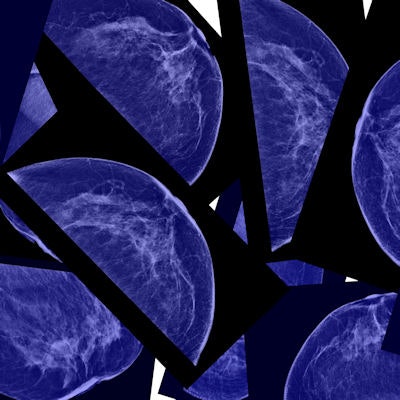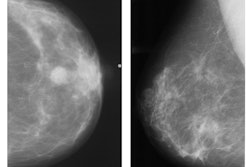
Despite the removal of cost-sharing from initial breast cancer screening, out-of-pocket costs persist as a barrier for early breast cancer diagnosis, a study published March 27 in JAMA Network Open found.
Researchers led by Danny Hughes, PhD, from Arizona State University found that women with insurance plans dominated by copays and deductibles undergo significantly fewer follow-up breast imaging procedures such as supplemental imaging compared to women who have coinsurance plans.
"Beyond drawing attention to this problem in the policy space, radiologists may want to better communicate the importance of recommended follow-up imaging," Hughes told AuntMinnie.com. "This way women with potential breast cancer aren't waiting until those who actually have cancer progress to a later stage before discovery."
Provisions in the Patient Protection and Affordable Care Act (ACA) and Protecting Access to Lifesaving Screenings (PALS) Act removed out-of-pocket costs for screening mammography for women who are 40 or older. However, this does not cover follow-up tests for when abnormalities are found on mammograms.
The researchers also noted a lack of data about links between high-deductible plans or other kinds of commercial insurance plans and patient decisions to go through recommended follow-up testing. Hughes and colleageus wanted to explore this area by using a machine-learning algorithm on Optum's deidentified Clinformatics Data Mart Database collected between 2015 and 2017.
The data is derived from a database of administrative health claims for members of large commercial and Medicare Advantage health plans.
The researchers applied a machine-learning algorithm -- a k-means clustering model -- to classify patient insurance plans and then rank plan types by out-of-pocket costs.
The researchers looked at data from 230,845 women ages 40 and older with no prior history of breast cancer who underwent screening mammography. Out of these, 71.3% were white, 7.3% were Black, and 7.1% were Hispanic. The algorithm found that the women were covered by 22,828 different insurance plans associated with 6,025,741 enrollees and 44,911,473 distinct medical claims.
Insurance plans dominated by coinsurance had the lowest average out-of-pocket costs.
| Average cost of follow-up breast cancer tests by insurance plan | |
| Insurance plan | Average cost |
| Coinsurance-dominated | $945 |
| Balanced | $1,017 |
| Copay-dominated | $1,020 |
| Deductible-dominated | $1,186 |
The team also found that compared to women with coinsurance plans, women with copay- and deductible-dominant plans underwent 24 and 16 fewer procedures per 1,000 women, respectively.
Additionally, women from all plan types had fewer breast MRI exams than women in the lowest out-of-pocket cost plans. This included five MRIs per 1,000 women in balanced plans, six per 1,000 in copay plans, and six per 1,000 in deductible plans.
However, the team also observed no statistically significant difference in breast biopsy use between plan types. Hughes said this was a "fortunate" finding that implies women took the recommendation for a biopsy "far more seriously" than those for subsequent imaging regardless of the out-of-pocket costs involved.
The study authors called for future studies to look at whether patient cost-sharing is tied to subsequent testing in other cancer screening efforts. They suggested that "it is likely" that financial costs of follow-up testing inform patient adherence to recommendations in other contexts.
"Additional policy changes, such as removing cost-sharing for subsequent tests after abnormal screening results or bundling all breast cancer diagnostic testing into a single reimbursement, may provide avenues to mitigate these financial barriers to care," they wrote.
Such legislation has been introduced in recent months, such as in Wisconsin, New Mexico, and Nevada, among others. Breast cancer organization Susan G. Komen has applauded the introduction of these bills, which the organization said will remove such financial barriers.



















